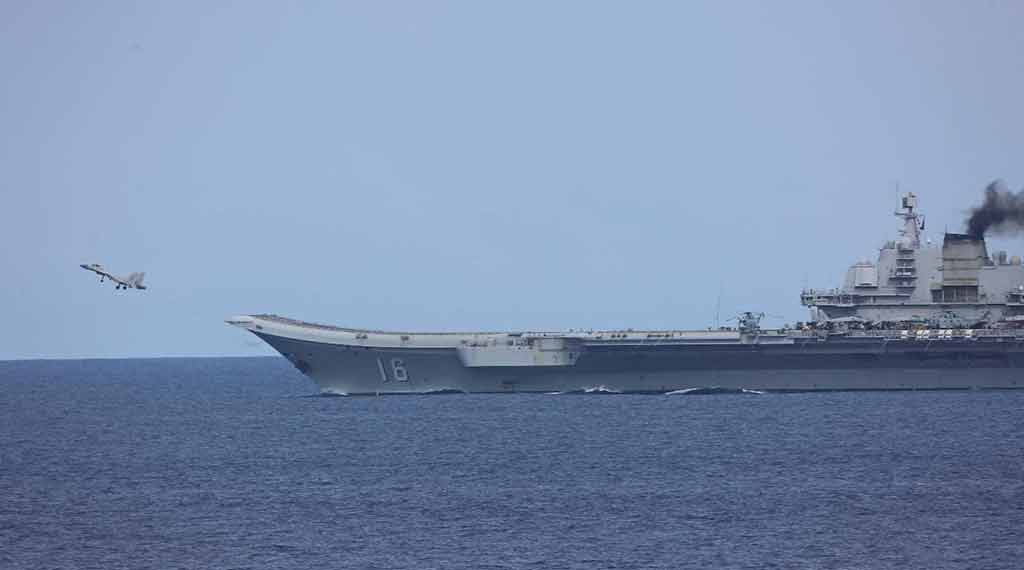A new naval base for China would allow quick breakout into the deep Pacific

The bane of the People’s Liberation Army Navy (PLAN) has been its unfettered access to the Pacific Ocean. However, China’s closer relations with Russia is changing this limitation to Beijing’s advantage.
The PLAN is experiencing significant growth in naval force structure, with roughly 350 ships in service. It has surpassed the U.S. Navy, which is still below 300 ships, but it still faces restrictions on its ability to come and go freely.
Germany, the Soviet Union, and Russia have had similar historical and geographic constraints placed on their navies, which have been limiting factors in their ability to challenge the American, British, and other Allied navies.
The force structure disparity between the PLAN and the U.S. Navy will worsen as the U.S. Navy faces a baffling downward trend in size. In the fiscal year 2025 budget proposal, the U.S. Navy lost more ships than were sunk at Pearl Harbor. With the Chinese navy’s growth, a new basing footprint is necessary to support the larger fleet size and provide alternatives for the Chinese fleet’s sorties to the Pacific Ocean.
China’s Navy
China’s navy must run a significant gauntlet of Allied territory and forces to reach the deep Pacific.
The current force structure of the Chinese navy is divided among three theater commands. The Southern Theater Command Navy is based in Zhanjiang, Guangdong Province, and has several key bases, including the underground submarine base at Yulin on Hainan Island. These bases provide quick access to the West Philippine Sea (sometimes referred to as the South China Sea). However, accessing the deep Pacific from the southern naval theater is complicated and precarious. The quickest route is the gap between Taiwan and the Philippines, which is now being fortified by American and Philippine forces.
The Eastern Theater Command Navy is headquartered in Ningbo, Zhejiang Province, which is below Shanghai and above Taiwan. The eastern fleet has to go south through the shallow Taiwan Straits, which are around the top of Taiwan, through the southern Japanese archipelago and the unified Japanese and American naval forces.
The current Northern Theater Command Navy is based in Qingdao, Shandong Province. The Yellow Sea in this area is relatively shallow, with an average depth of roughly 150 feet, which exposes submarine operations. The Chinese may have lost one of their nuclear attack submarines in this area in a mysterious event in 2023. The Yellow Sea is a vulnerable terrain for Chinese naval forces, which must be pushed by the growing South Korean and Japanese navies backed up by the U.S. Navy to reach the Pacific.
‘No Limits’ Agreement
The latest update to the “no limits” agreement between Beijing and Moscow codifies the effort to give China access to the Sea of Japan.
Chinese leader Xi Jinping and Russian President Vladimir Putin recently signed what could be considered an addendum to the “no limits” partnership between the two countries to upend the U.S.-led world system. This agreement in May codified several matters including a framework of an agreement to allow China to use the Tumen River for access to the Sea of Japan. The Tumen River separates North Korea from Russia, and upriver, less than 10 miles, is China. China had access to the Sea of Japan in this area, but in the 1860 Treaty of Peking, forfeited this territory and access to the Sea of Japan to Russia.
This forgotten three-way intersection of totalitarian states is suddenly of interest in the international Great Game of the Great Power showdown with China. The development of the Tumen River with new ports and bridges would provide an economic windfall to China, Russia, North Korea, and land-locked Mongolia.
Revisiting access to the ocean through this river has been a constant discussion point between China and Russia, with little progress. As the Russia–Ukraine war drags on, the dynamic has changed. According to political science professor Alexander J. Motyl, a Russia specialist, “It’s often said that Putin has effectively transformed his country into a vassal of China. That’s true, but Russia’s relationship with its much more powerful neighbor to the south is more accurately termed colonial.”
NATO, which just concluded its annual summit, has become acutely aware of the inseparable connection of Chinese war material support to Russia’s continued ability to wage war in Ukraine.
- Taiwan mobilizes 400,000 to bolster civil defense - November 1, 2024
- A way forward on Taiwan? - September 28, 2024
- US should speed up bolstering its Arctic strategy to counter China’s ambitions - September 16, 2024
